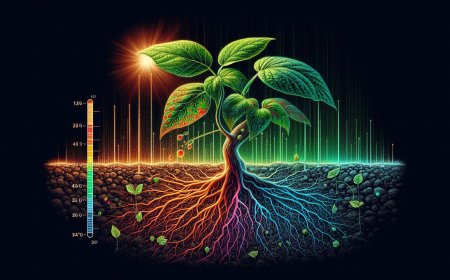Sugarcane: A Sweet Giant Among Grasses
Explore the unique biology of sugarcane, a giant grass responsible for sugar and biofuel production, known for its towering stalks and tropical growth.

Sugarcane is more than just the source of the sugar in our kitchens; it’s a remarkable member of the grass family that holds a unique place in both biology and agriculture. Though its tall, sturdy stalks and lush green leaves may make it look like a plant in its own league, sugarcane is, in fact, a type of grass—closely related to the grasses you might see on your lawn or in a meadow.
A Giant Among Grasses
Belonging to the genus Saccharum, sugarcane is part of the Poaceae family, which includes other economically important grasses like wheat, corn, and rice. But unlike typical grasses, which are often short and used primarily as ground cover, sugarcane can grow up to an impressive 20 feet in height! Its towering stature and thick, fibrous stalks set it apart from other grasses, but these features are adaptations that help it thrive in tropical and subtropical regions, where it can receive plentiful sunlight and water.
Why Sugarcane Stands Out
The primary reason sugarcane has achieved its iconic status is, of course, its high sugar content. The juicy, fibrous stalks of sugarcane are packed with sucrose, making it the leading source of sugar worldwide. But sugarcane doesn’t just produce sweetness; it also serves as a vital crop for biofuel production. By processing sugarcane into ethanol, we can create a renewable energy source that reduces dependence on fossil fuels.
The Biology Behind Sugar Production
Sugarcane is a perennial grass, which means it can be harvested multiple times after planting. With each cutting, the plant’s roots send up new shoots, allowing farmers to harvest it year after year. In the plant’s stalks, specialized cells produce and store sucrose through photosynthesis, converting sunlight into the sugary energy that makes sugarcane so valuable.
Environmental Role and Adaptations
Sugarcane has evolved various adaptations to succeed in its natural environment. Its thick stalks retain moisture, allowing it to thrive in hot, humid climates. The plant’s broad leaves help it capture sunlight efficiently, enabling rapid growth. Additionally, sugarcane's dense root system helps prevent soil erosion, making it a valuable crop for protecting land in tropical regions.
Conclusion: More Than Just a Sweet Treat
Though we often think of sugarcane for its role in producing sugar, it’s so much more than just a crop. As a towering type of grass with a rich biological profile, sugarcane represents the diversity and adaptability of the grass family. From feeding the world to fueling industries, sugarcane shows how a single plant can be essential in so many ways, proving that even something as humble as grass can be powerful, versatile, and essential to our lives.
What's Your Reaction?





























